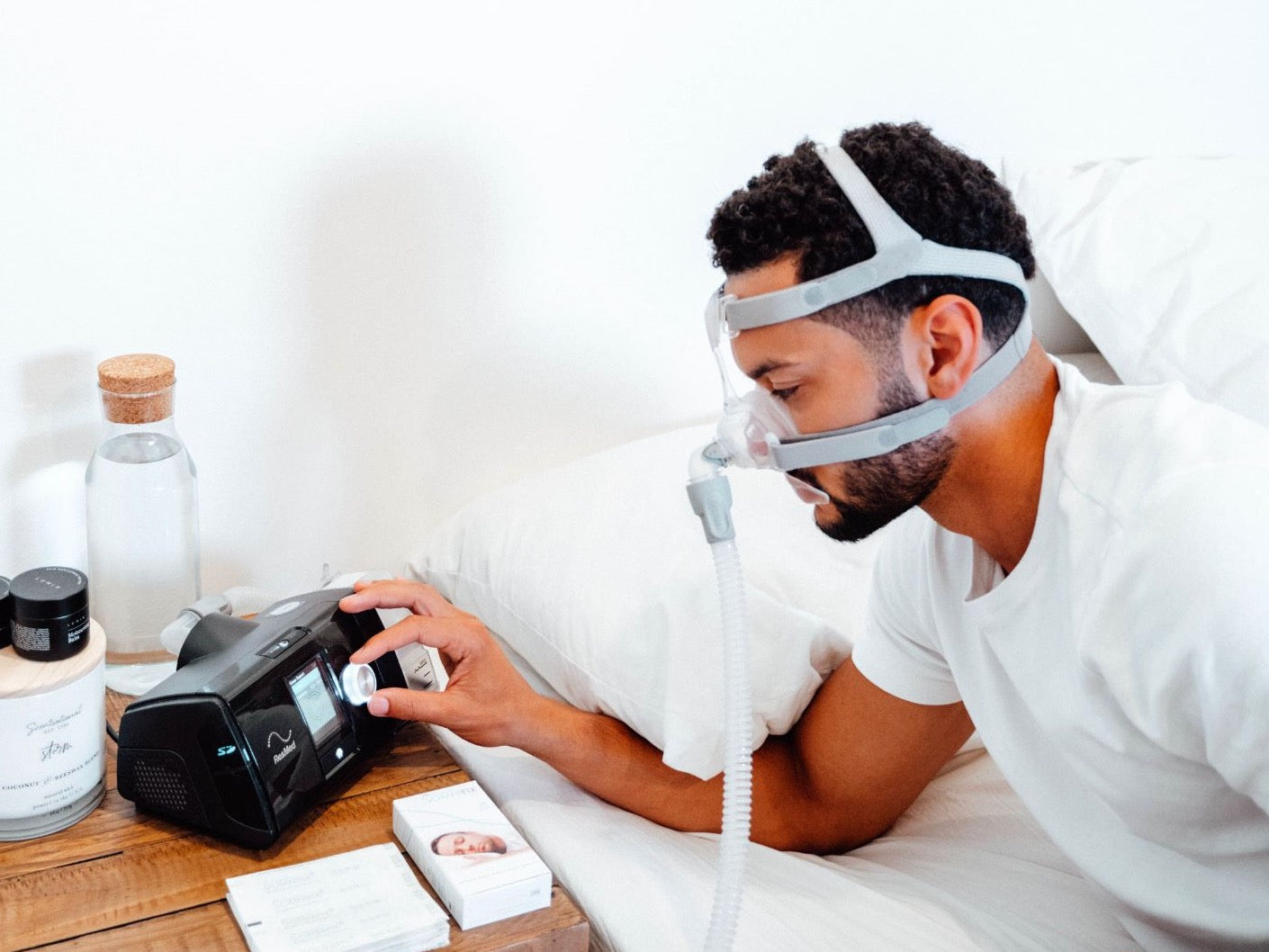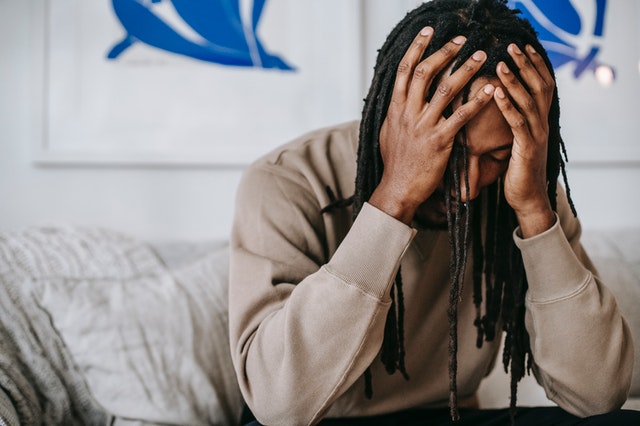What Exactly is Sleep Apnea?
If you’ve been diagnosed with sleep apnea, you probably have loads of questions. What is it? Why can it be so dangerous to your health? And how do you even get started learning about the world of CPAP therapy? We know how overwhelming a sleep apnea diagnosis can be and we’re here to help! Sleep apnea is a condition that causes the airway to become blocked during sleep. This can cause you to stop breathing multiple times throughout the night.
The condition was first discovered in 1965, and the first sleep clinic opened five years later in 1970. The most noticeable symptoms of sleep apnea are snoring due to throat tissues blocking the airway or feeling tired even after getting a full night’s rest. One of the most effective treatments for sleep apnea is a continuous positive airway pressure (CPAP) machine.
How do CPAP Machines Help to Treat Sleep Apnea?
You’re probably questioning how wearing a laughable contraption can help to treat sleep apnea. Although strange-looking, CPAP machines provide a consistent flow of positive airway pressure that helps to keep your airway from collapsing while you catch some Zs. Since the airway remains unobstructed, you can maintain a constant flow of breath that keeps your blood oxygen levels where they need to be throughout the night.This leads to improved sleep, which has tons of other health benefits that can boost your quality of life.
Getting adequate, restful sleep can help to boost your mood, increase heart health, encourage weight control, and more. CPAP therapy is the term used to describe CPAP machine treatment. Sleep apnea patients who use CPAP therapy for relief are expected to use their machines nightly for the duration of sleep. Several different types of CPAP masks work to fit the specific needs of different patients.
Types of CPAP Masks
- CPAP Pillows: Don’t worry, these aren’t pillows for your face. Nasal CPAP pillows are the least bulky CPAP therapy option, making them a great choice for those who may feel claustrophobic in a larger mask or people who wear glasses. However, they provide the lowest amount of pressure, so they may not be for you if you need a higher setting option from a mask. If you find yourself breathing through your mouth often at night, this mask alone might not be the best option for you.
- Nasal Masks: Nasal masks usually cover the upper lip area up to the bridge of the nose. Airflow distributes through the mask and into the nose, which works well for patients who need a higher, direct flow of pressure. This choice is usually more effective than a nasal pillow without being as bulky as a full mask. Like nasal pillows, nasal masks may not be the most effective choice for mask breathers.
- Full Face Masks: Full face masks cover the mouth and nose, which helps to create a bigger seal over the airways than nasal pillows and nasal masks. Though these masks are the largest and most uncomfortable of all options on the market, they provide the highest amount of pressure for those that need it. Since these masks seal the mouth, they help mouth breathers more than other models. Full face CPAP wearers may have more air leakage through the top of the mask near the eyes. For insurance companies to cover the cost of CPAP therapy, patients must meet compliance rules -- no matter the mask type.
CPAP Compliance Explained
To meet most CPAP compliance rules, most patients must wear their mask for an average of at least four hours each night. The mask must also be worn for at least 70% of nights or 21 days per month. A large portion of patients don’t meet requirements due to mask removal during the night or because they decide to skip CPAP therapy altogether for too many nights in a row. Think of it like a test where cheating is impossible -- there’s no way around having to wear the mask as intended. For the first few months of usage, insurance companies closely track reports of readings that your machine records. The following readings are usually included in each report:
- Usage: If you were thinking of turning your machine on but not putting the mask on your face, you’re in for a disappointment. Believe it or not, today’s CPAP machines can record the amount of time you spend wearing the mask.
- Pressure: This reading monitors the amount of pressure that is blowing into your airway from the CPAP machine. CPAP settings allow users to adjust the pressure on most masks.
- Leaks: Most CPAP machines leak at leastsome air, but if you have an excessive amount of leaks it could mean that you aren’t wearing your mask correctly or that you don’t have the right fit. Leakage can decrease pressure and make CPAP therapy less effective.
How to Get the Most Out of Your CPAP Device
Now that you know the importance of compliance and what to watch out for to make sure your insurance company will continue covering the cost of your CPAP therapy, you can take a few steps to ensure that you’re getting the most out of your device. First off, you want to keep your mask clean so that no blockages occur. Unplug the machine and disconnect the mask and tubing. Wash the mask with soap and warm water. Then, rinse and lay the mask out to dry. Your mask needs daily cleaning. To clean the humidifier tub, remove it and soak in warm soapy water. Rinse and put out to dry. The humidifier tub also needs daily cleaning. To clean the tubing, disconnect it and rinse the inside and outside with soap and warm water. Rinse and place out to air dry. The tubing needs cleaning weekly. You can also use a water/vinegar solution monthly to make sure that any pesky residue is removed from your device. You can work to stop leaks by adjusting your CPAP settings or by tightening the straps on your mask. If you’re still snoring at night, your CPAP settings may be too low or you may have a leak. You should be able to fit two fingers between your face and the mask, but it should be tight enough that a proper seal is formed around the edges of the mask. If you’re still snoring or fighting leaks after adjusting the mask, turn your pressure up until snoring subsides. To find out if you’re snoring during the night, try out a sleep recording app like SnoreLab.
Prevent Pesky Mouth Leaks and More With Somnifix
Since so many people mouth breathe at night., many physicians start new CPAP therapy patients off with full face masks. Rather than hassling with a full face mask or worrying about mouth breathing with a CPAP pillow or nasal mask, stay compliant and comfortable with Somifix! Take the uncertainty out of CPAP therapy compliance with affordable, comfortable, hypoallergenic mouth strips that keep your lips sealed safely and effectively.





